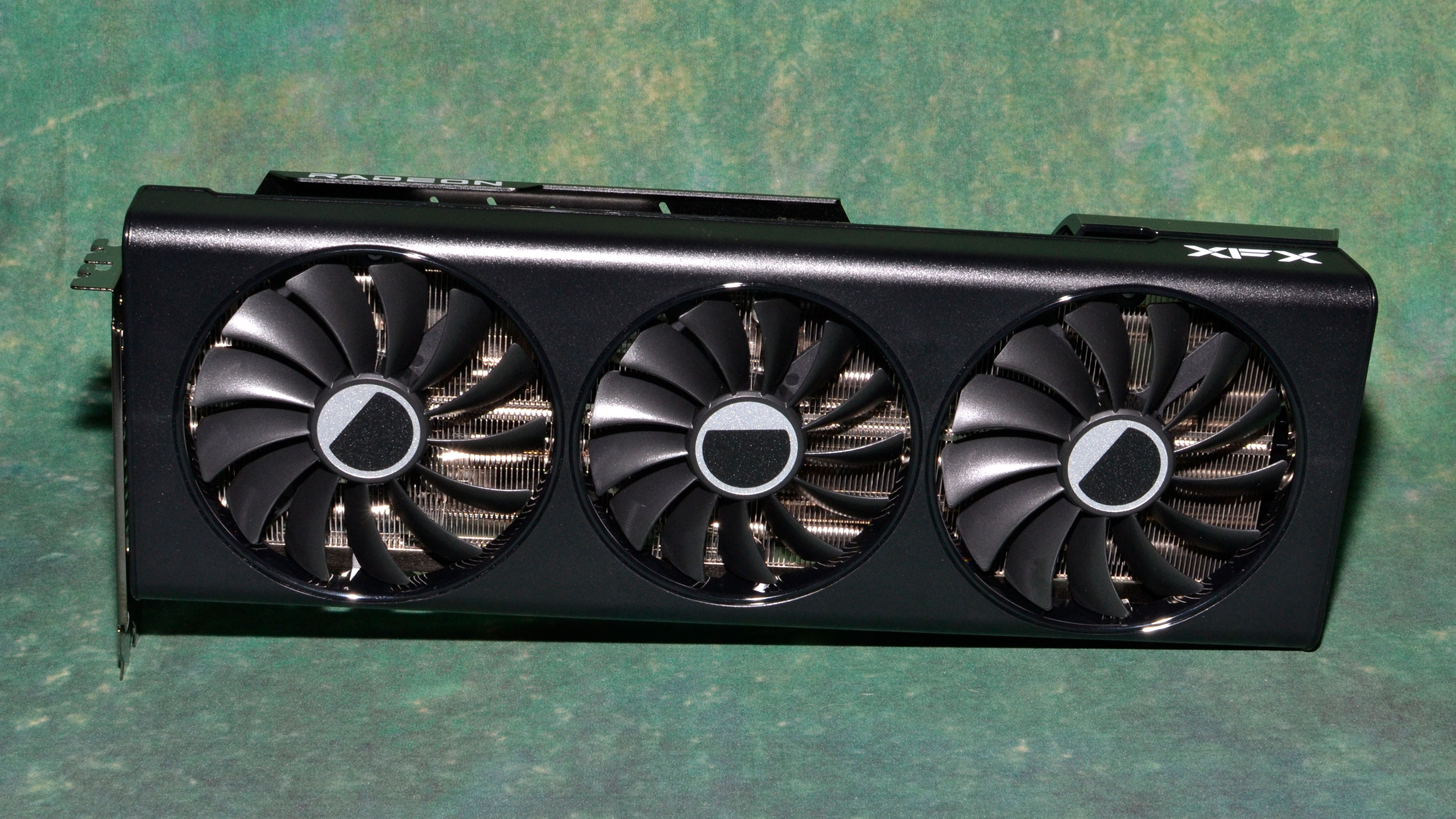Why you can trust Tom's Hardware
Stepping down to 1080p ultra, the margins start to shrink when comparing the RX 7700 XT and RTX 4060 Ti. While it's possible CPU and other system bottlenecks are becoming a factor, these GPUs are also far enough down the hierarchy that we should still be mostly limited by the graphics processing power.
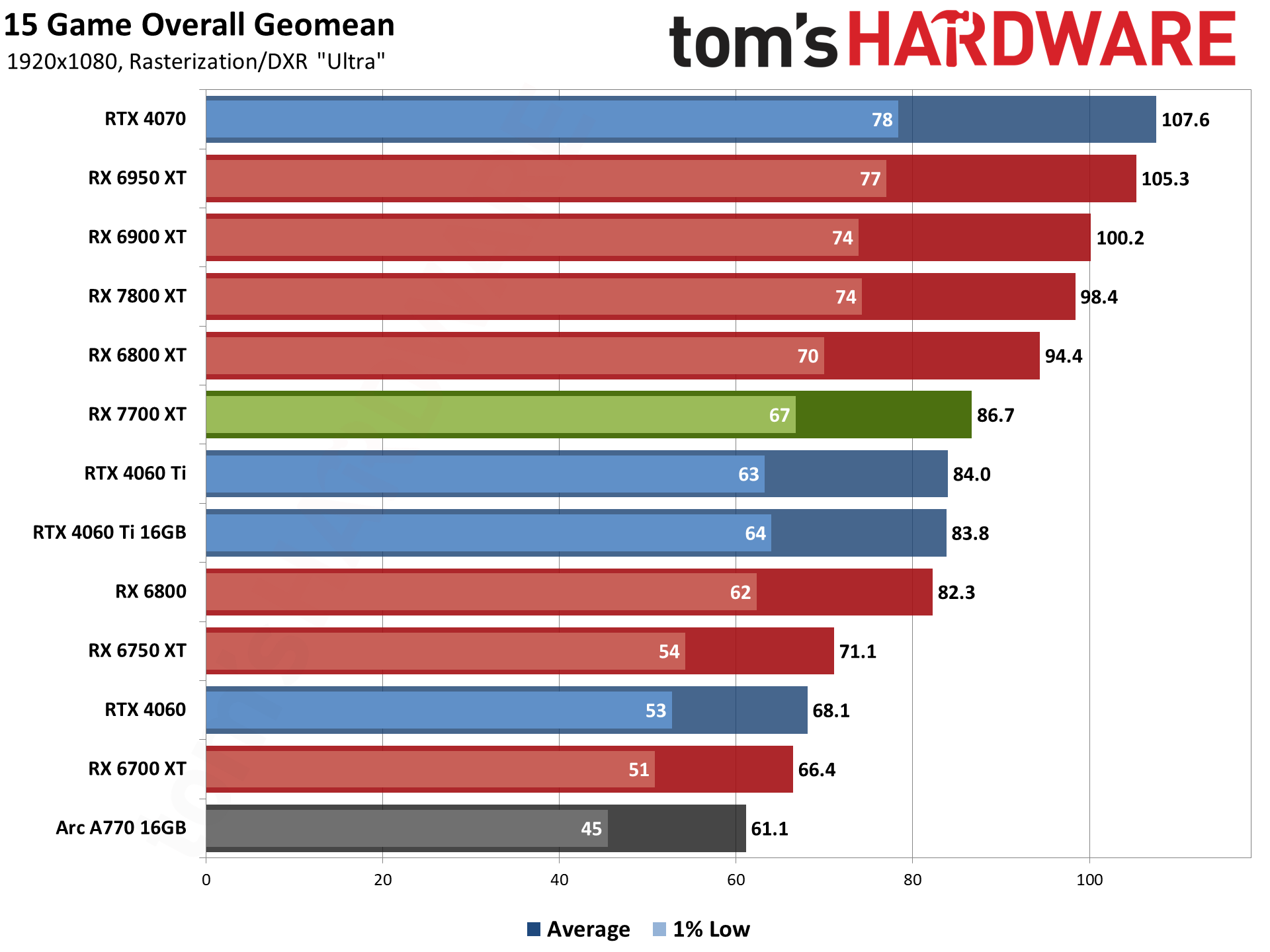
The RX 7700 XT now leads the RTX 4060 Ti by just 3% overall. There are certainly still games that favor AMD by 20% or more, but there are also games where there's no real difference, and ray tracing games, as usual, tend to favor Nvidia. 1080p also doesn't hit Nvidia's 128-bit interface as hard, which likely helps to narrow the gap.
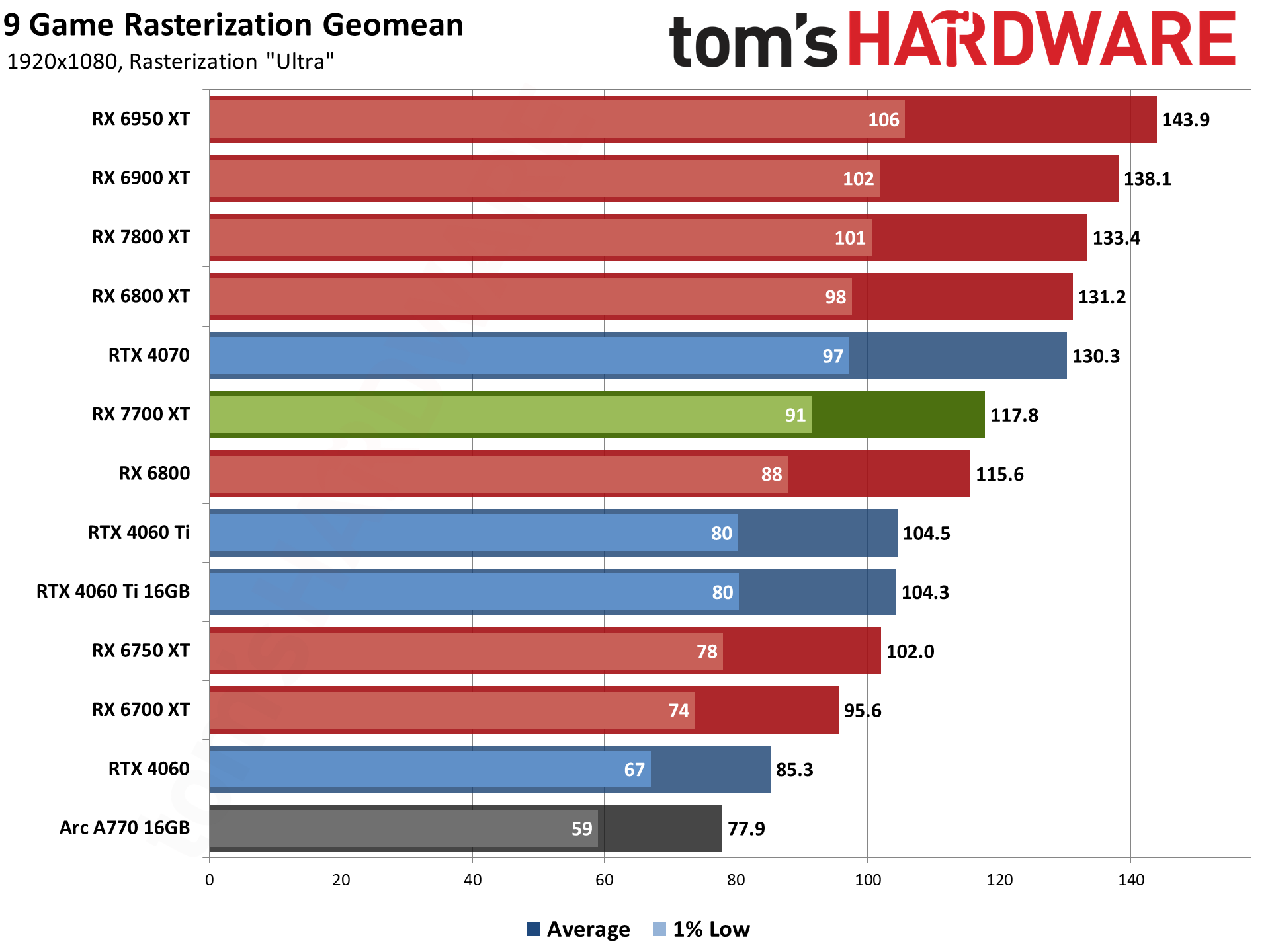

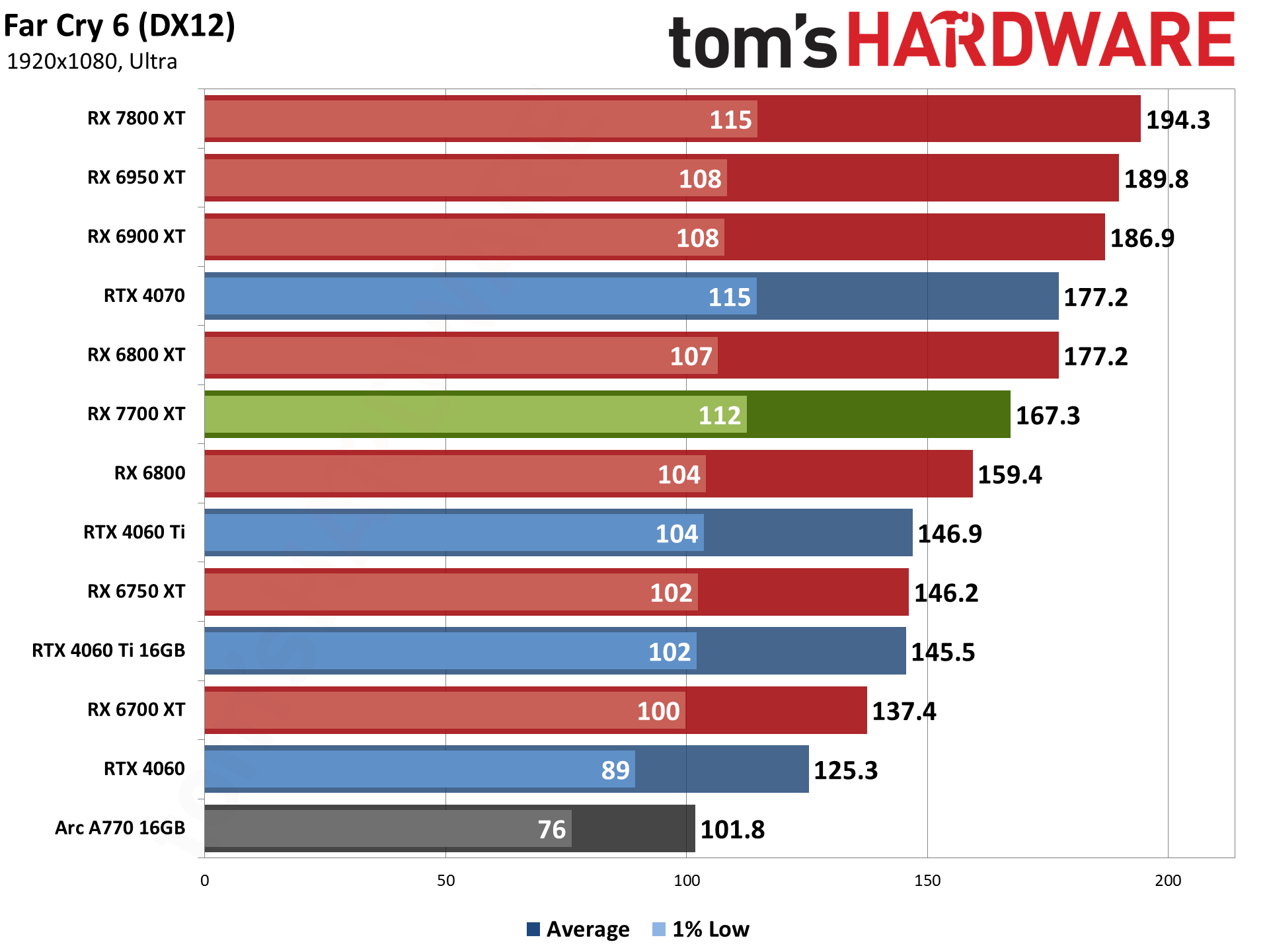
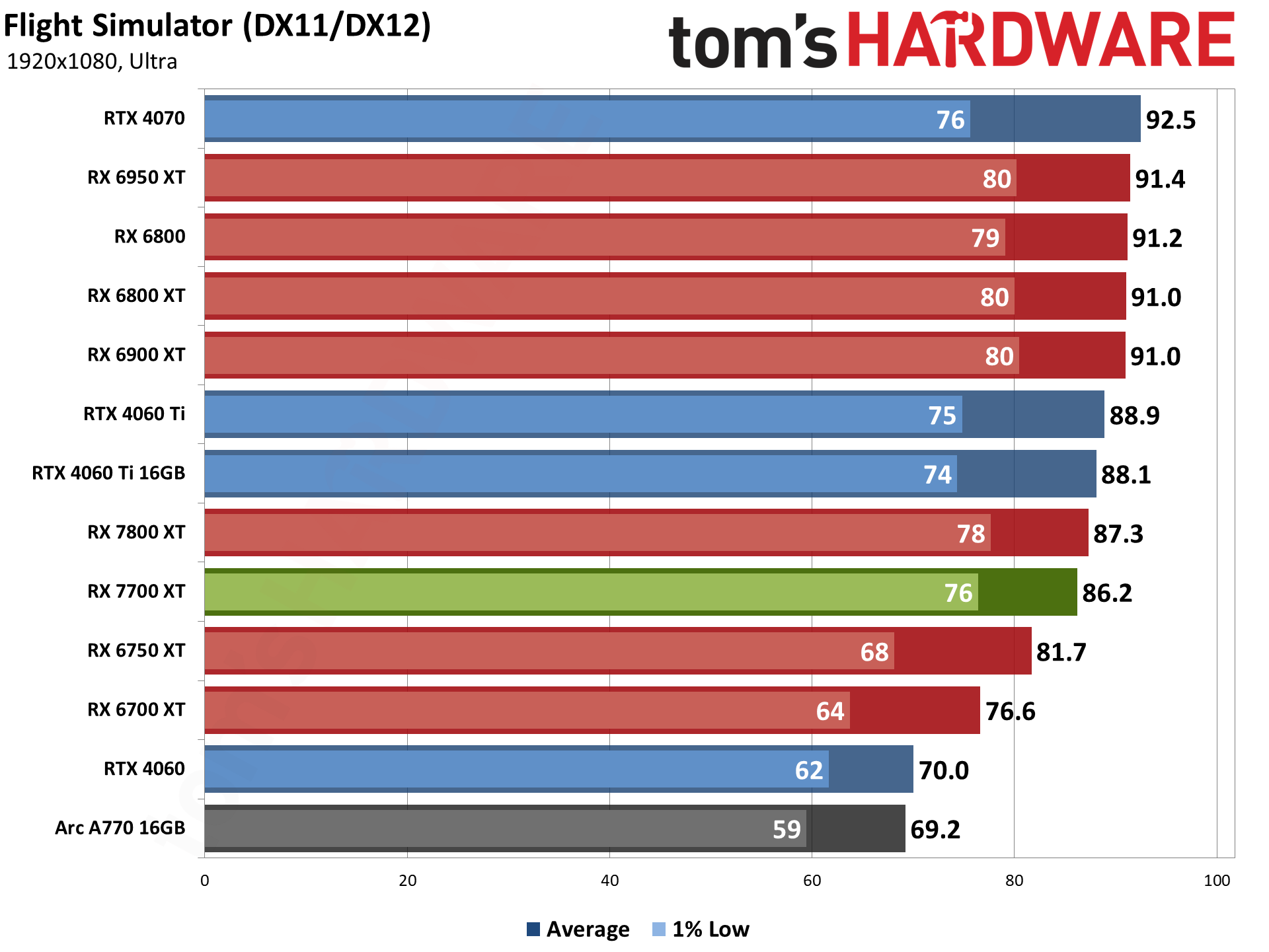
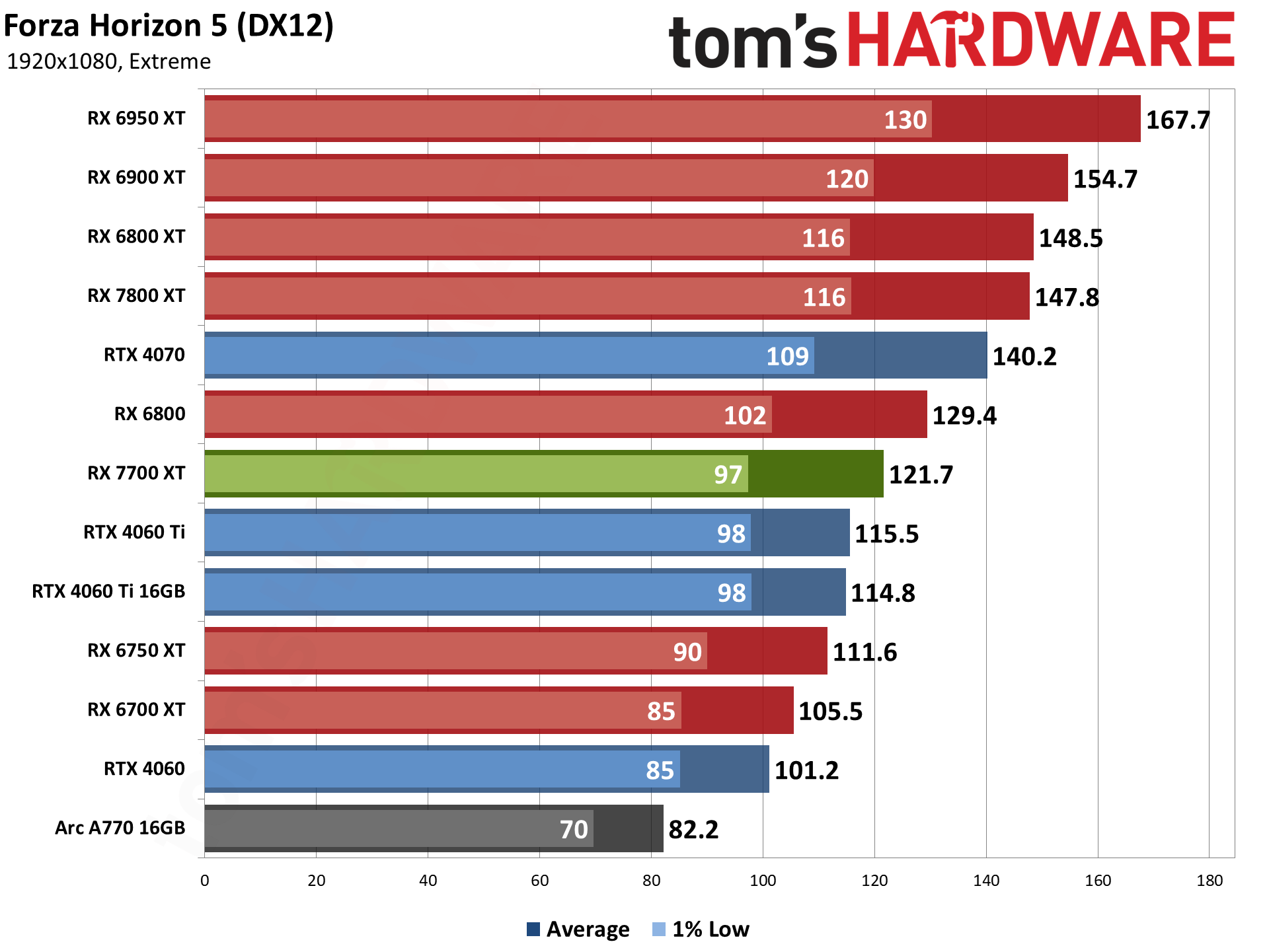
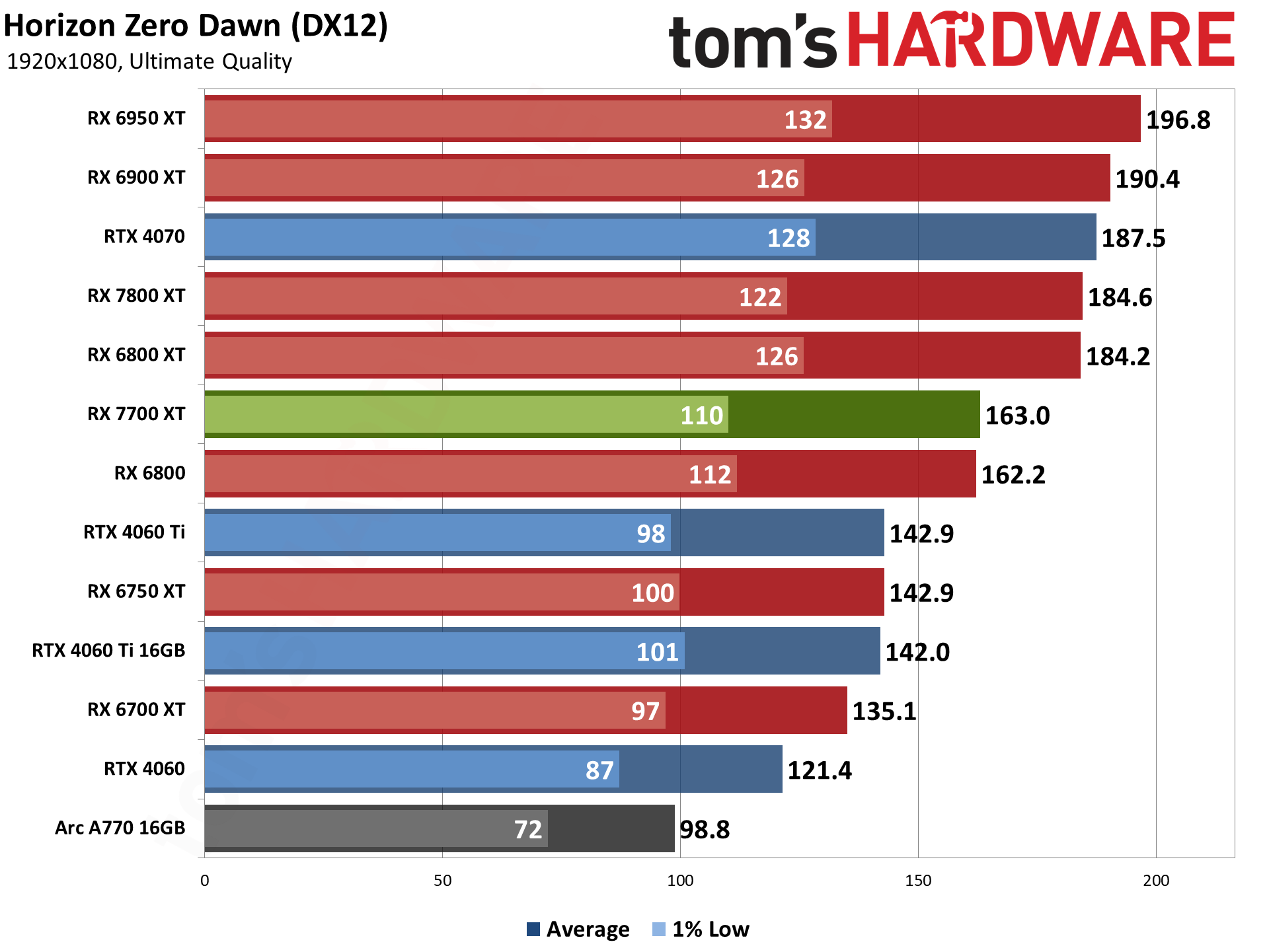
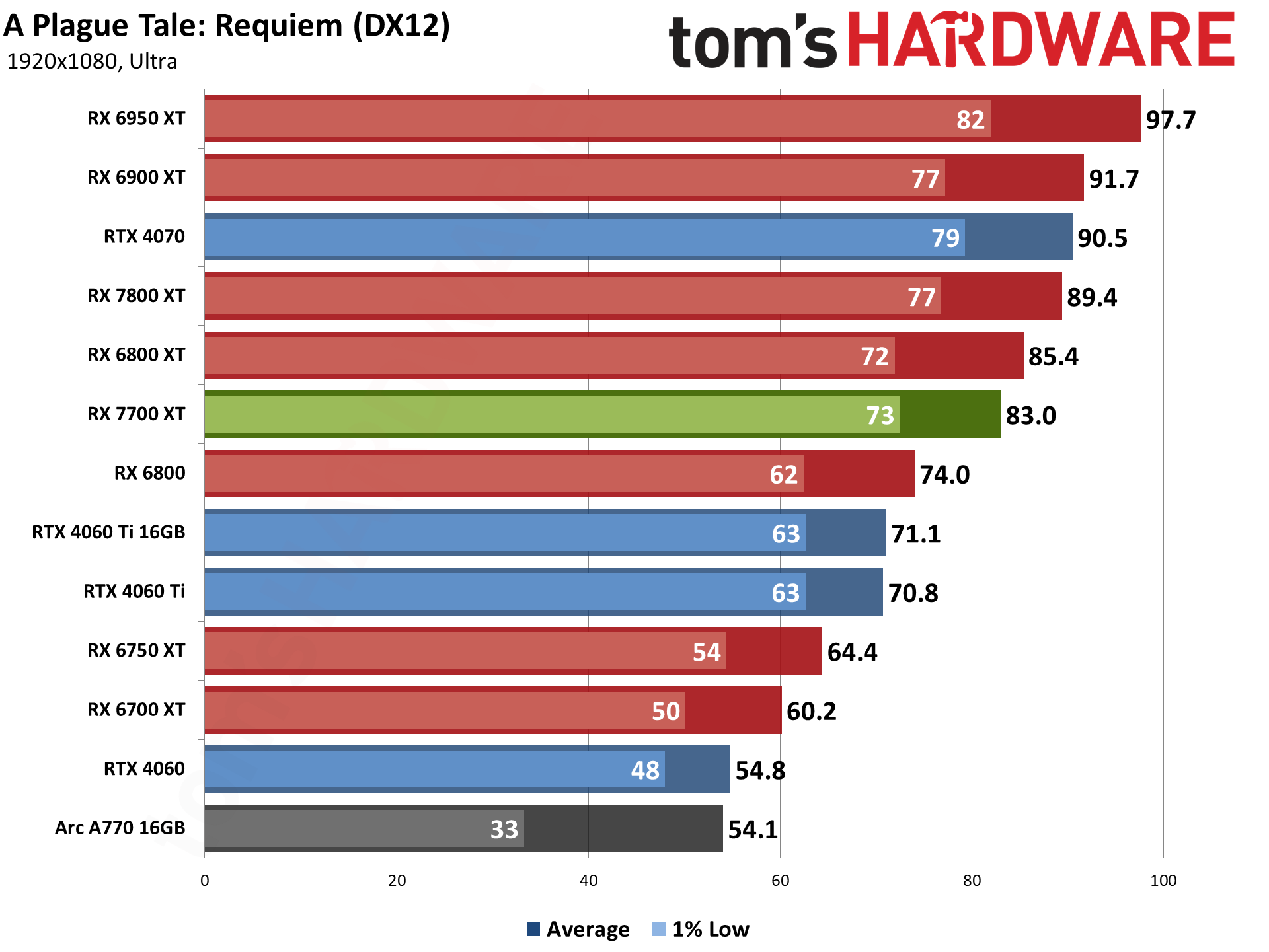
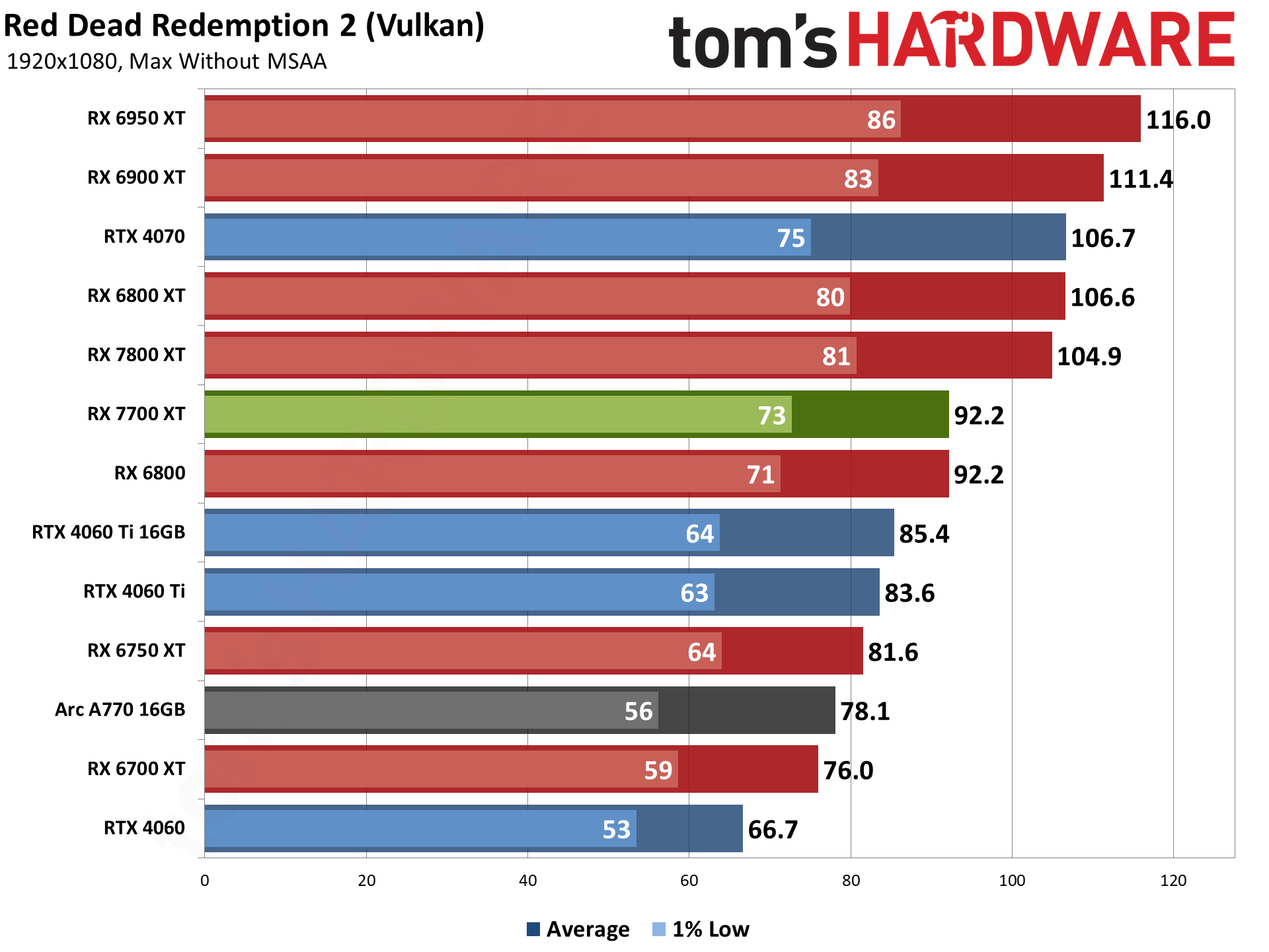
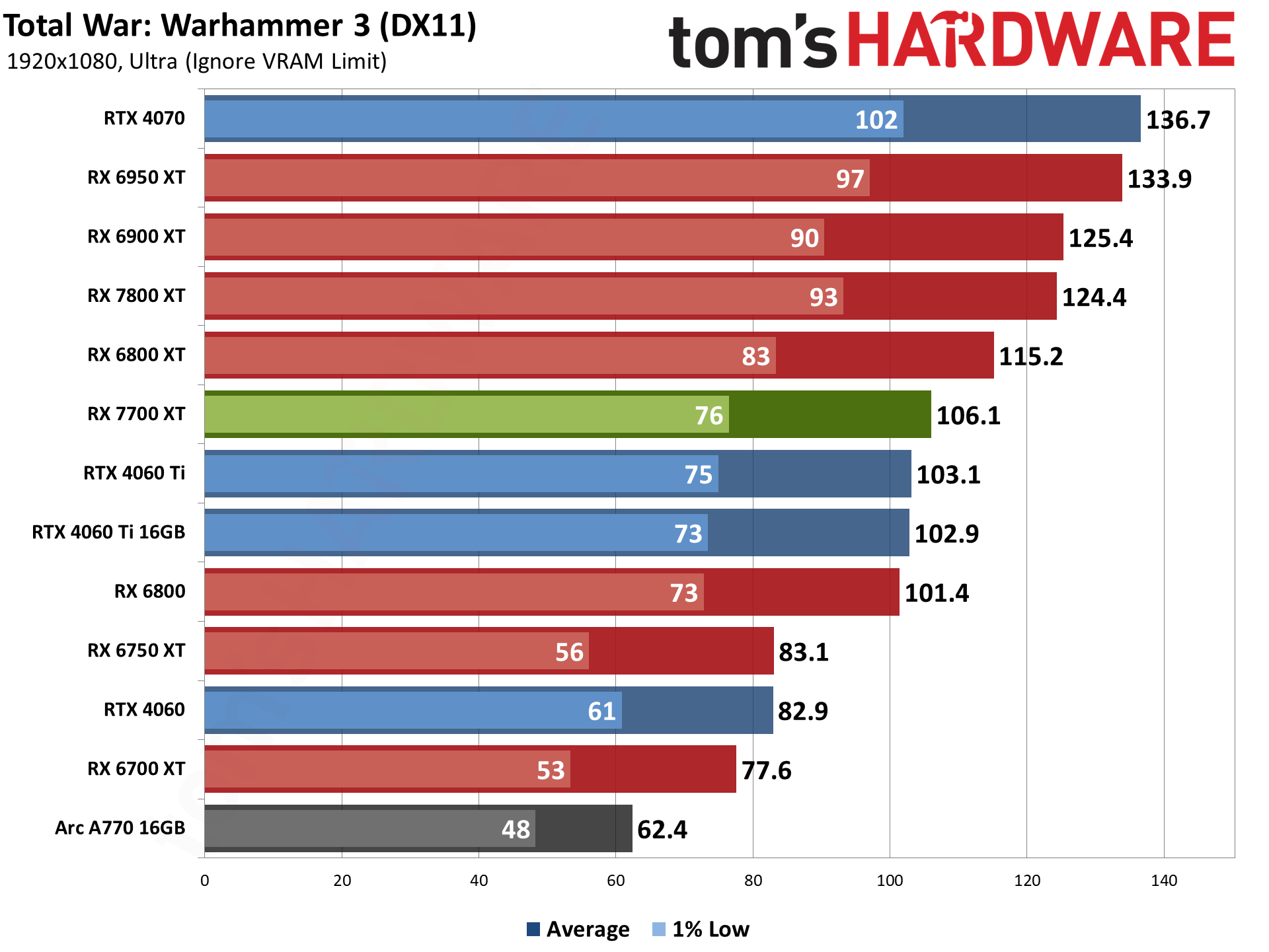
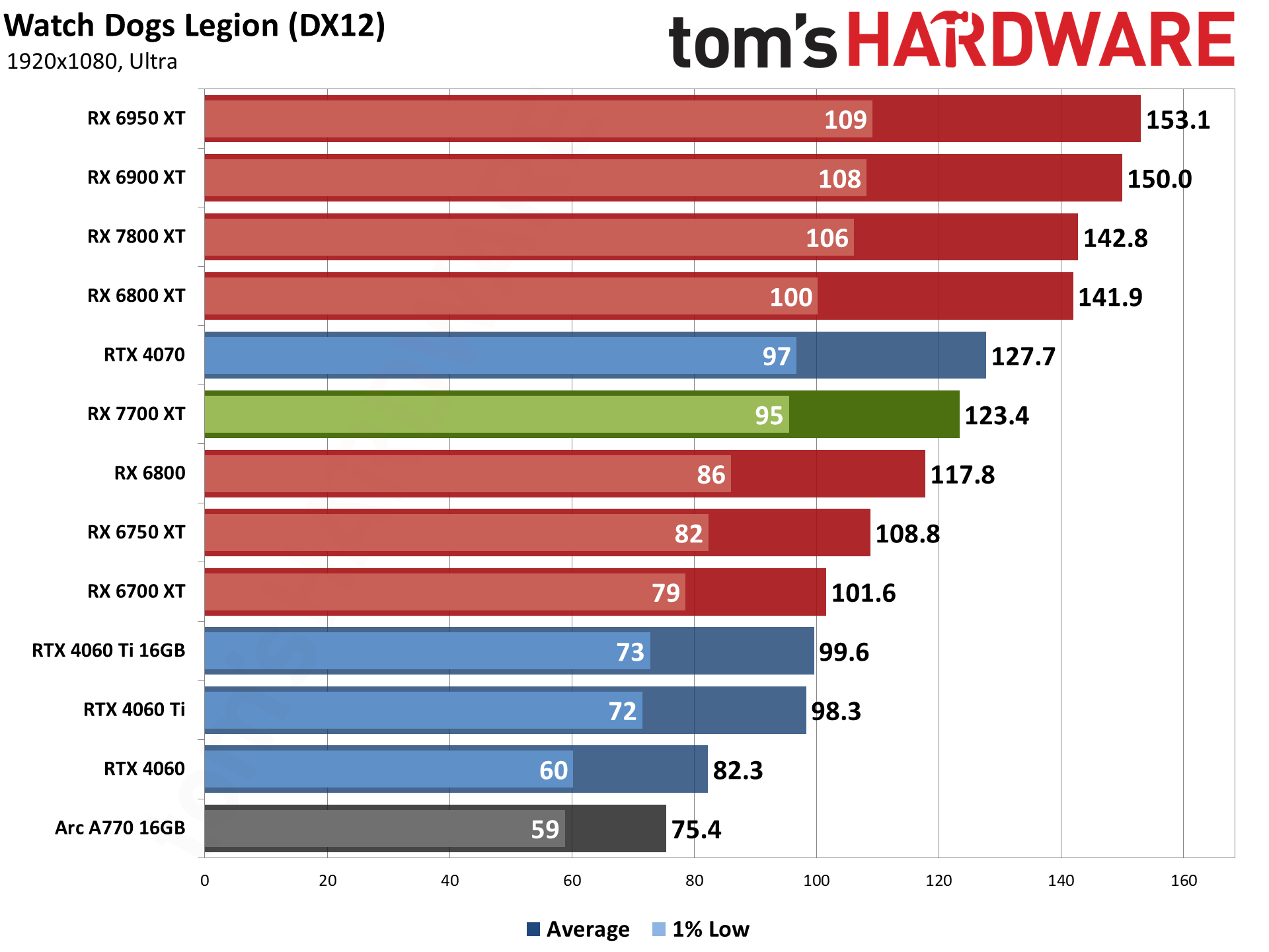
The rasterization rankings are pretty much the same as at 1440p, just with slightly less of a gap. RX 7700 XT beats the RTX 4060 Ti by 13% and squeaks past the previous-gen RX 6800 by 2% again. Every game also easily clears the 60 fps mark, with only Flight Simulator and Red Dead Redemption 2 failing to reach the triple digits.
AMD would probably like more comparisons with the equivalently (now) priced 4060 Ti 16GB, but even after the $50 price cut, that's not really a great option. The added VRAM mostly helps at 4K ultra, at which point the GPU is already struggling quite a bit in most modern games. This means the real competition is from the 4060 Ti 8GB that costs $50 less, and things still end up mostly as a wash.
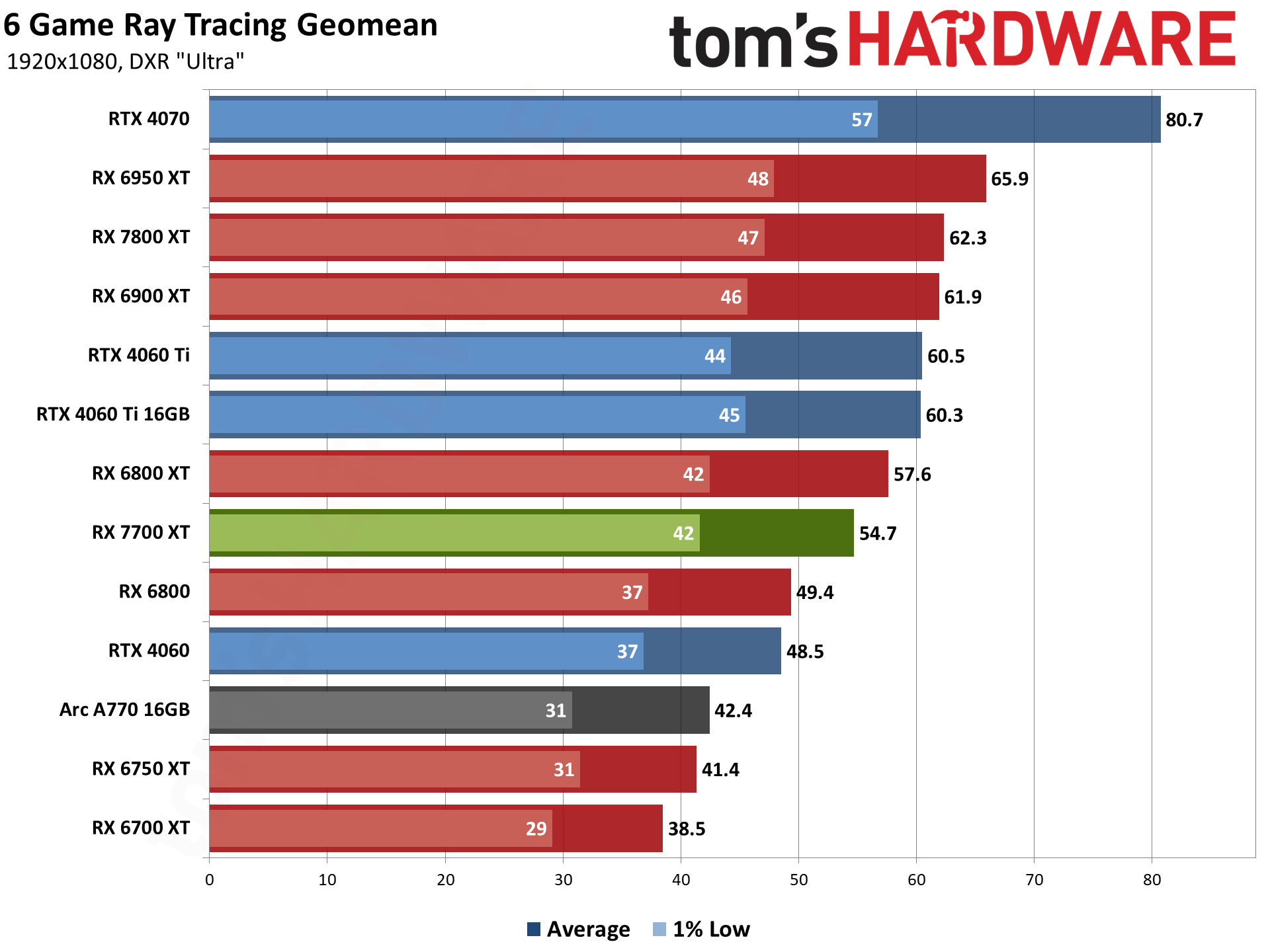
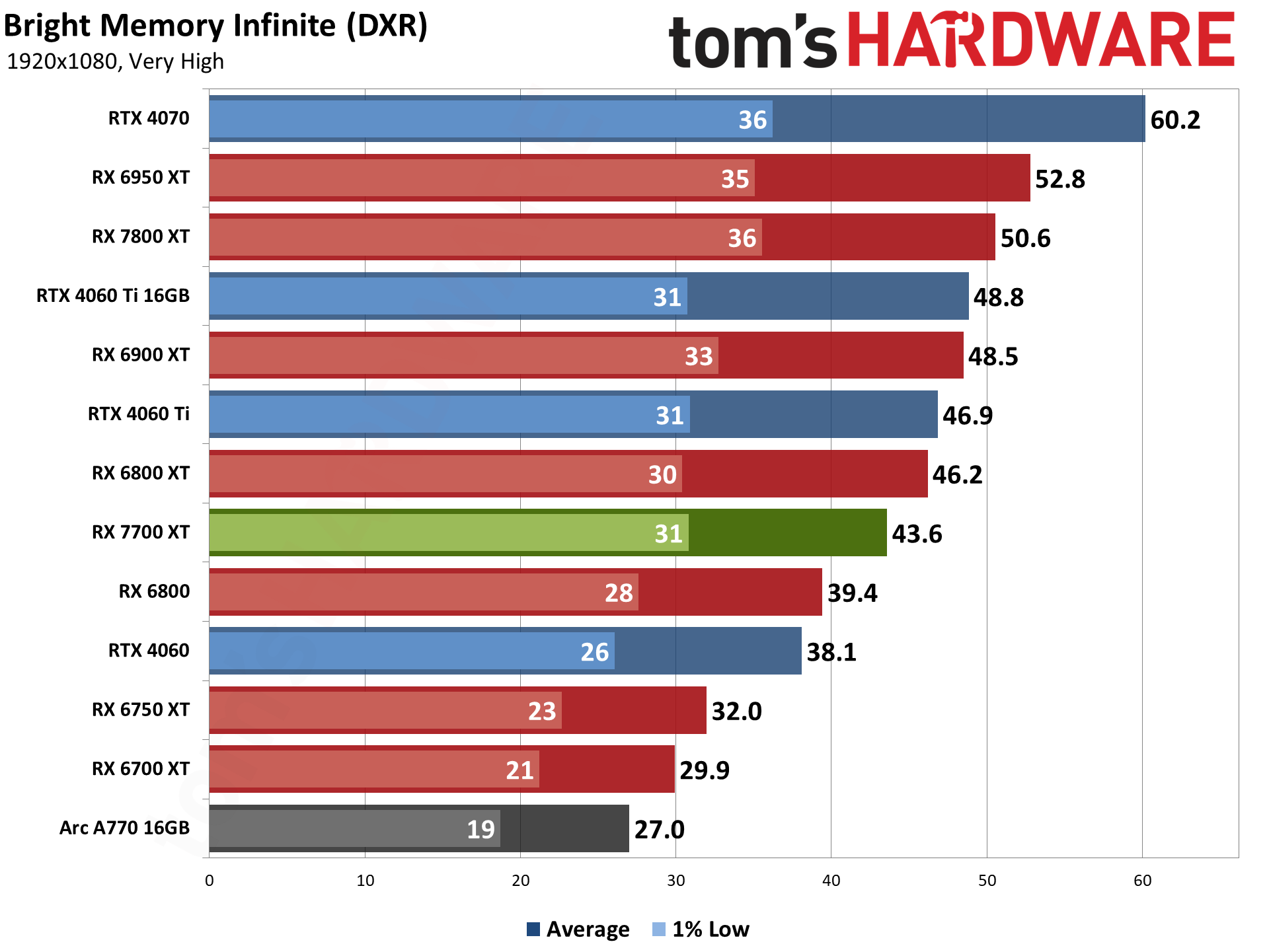
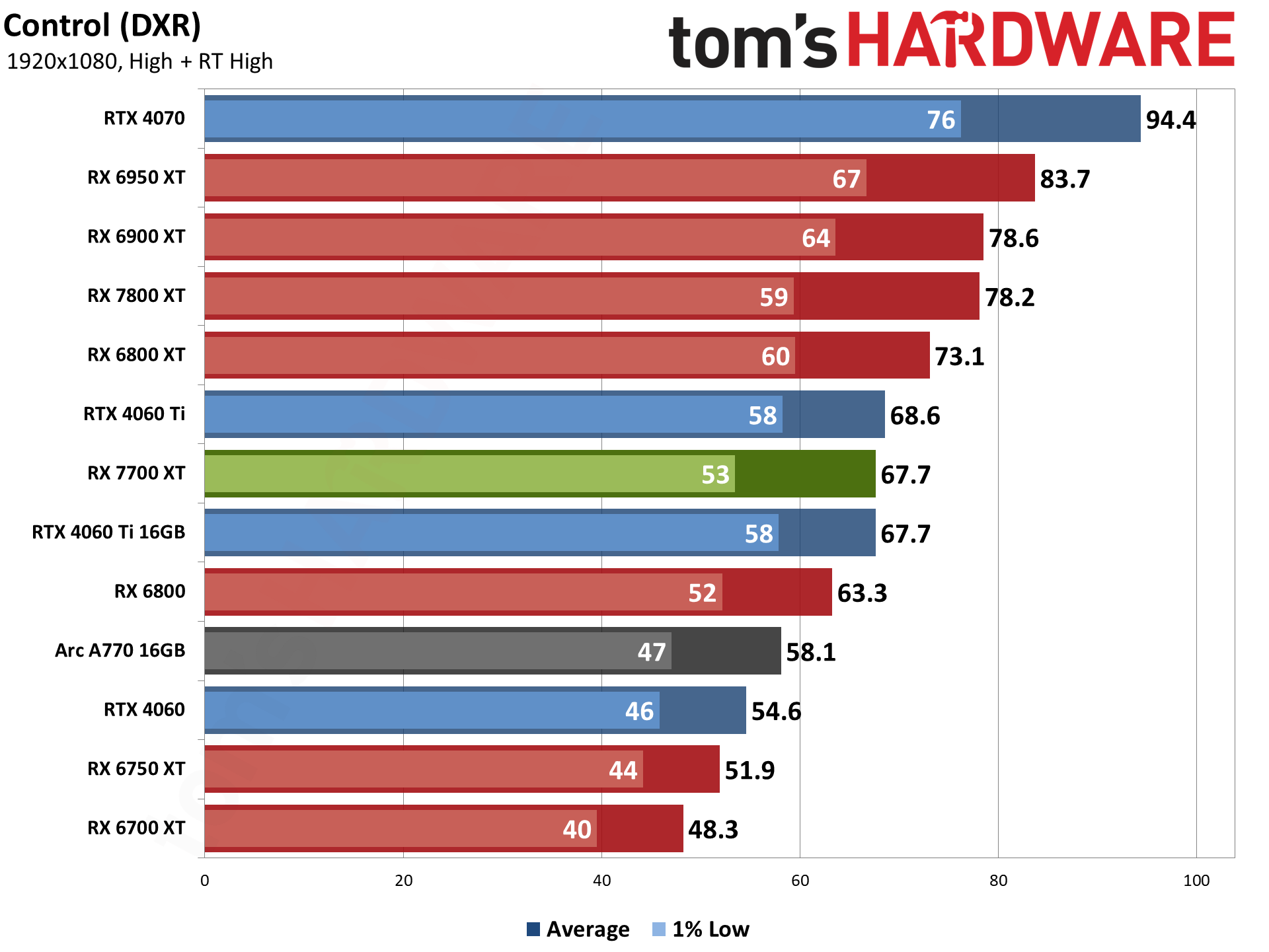
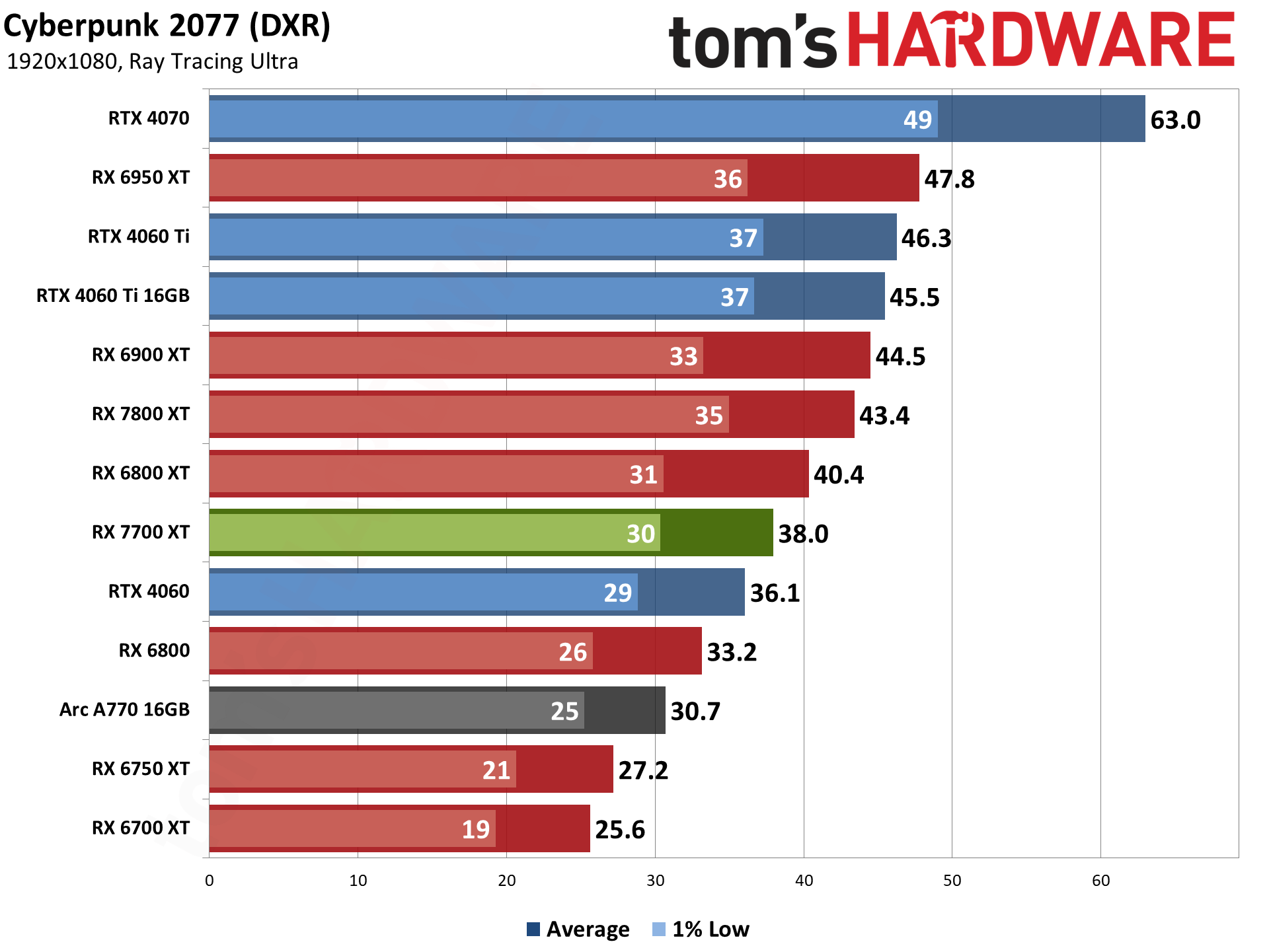
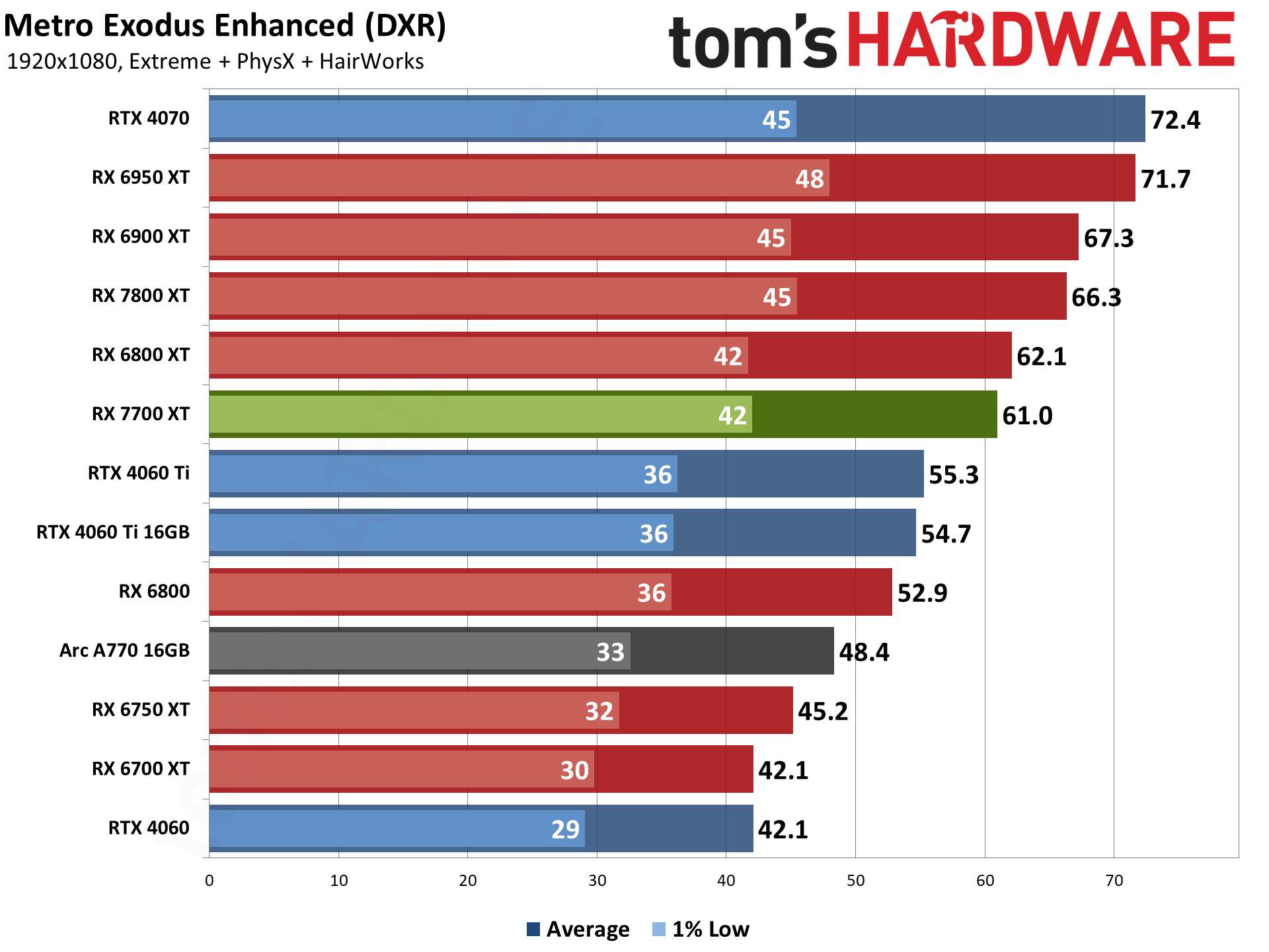
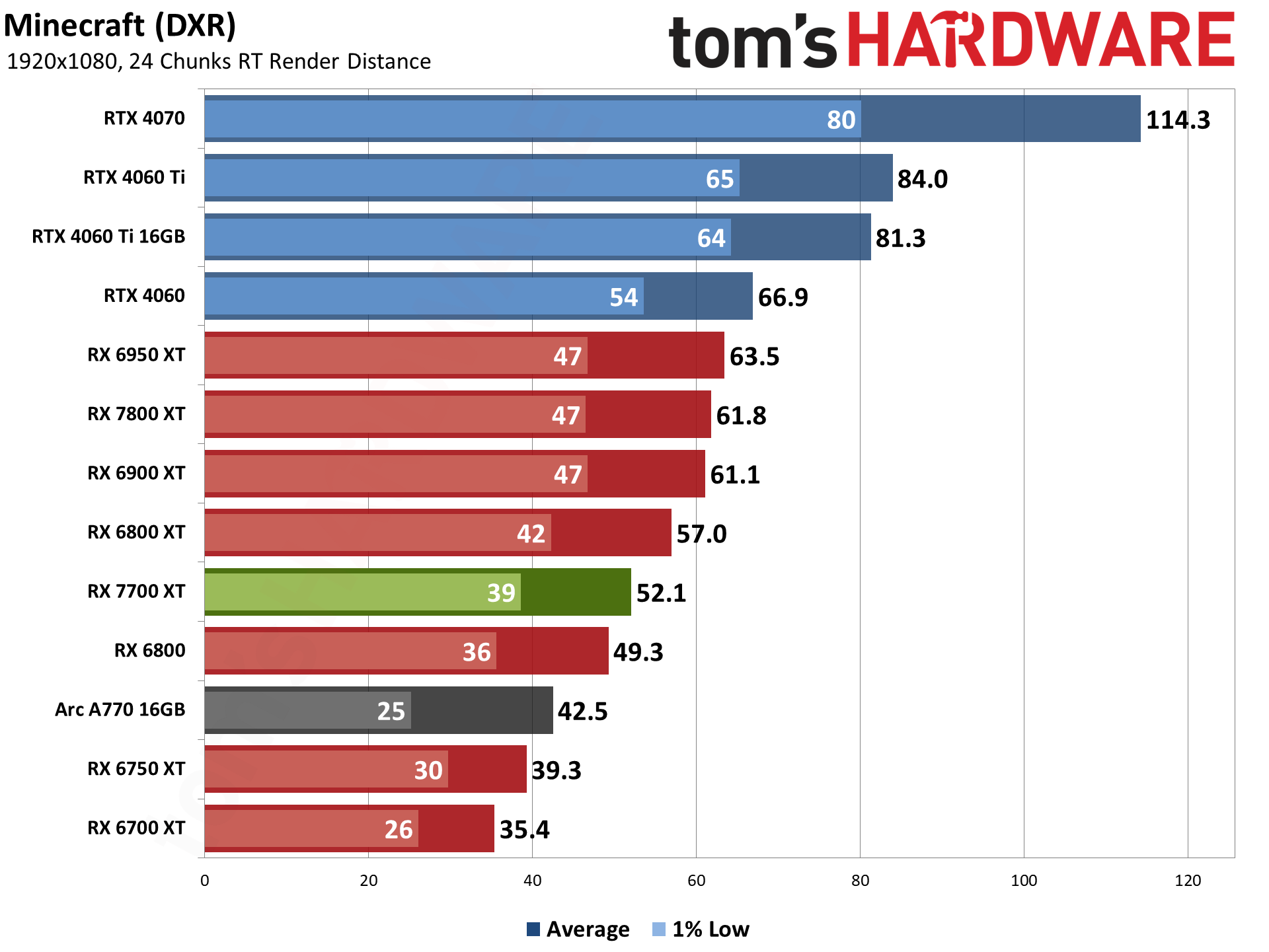
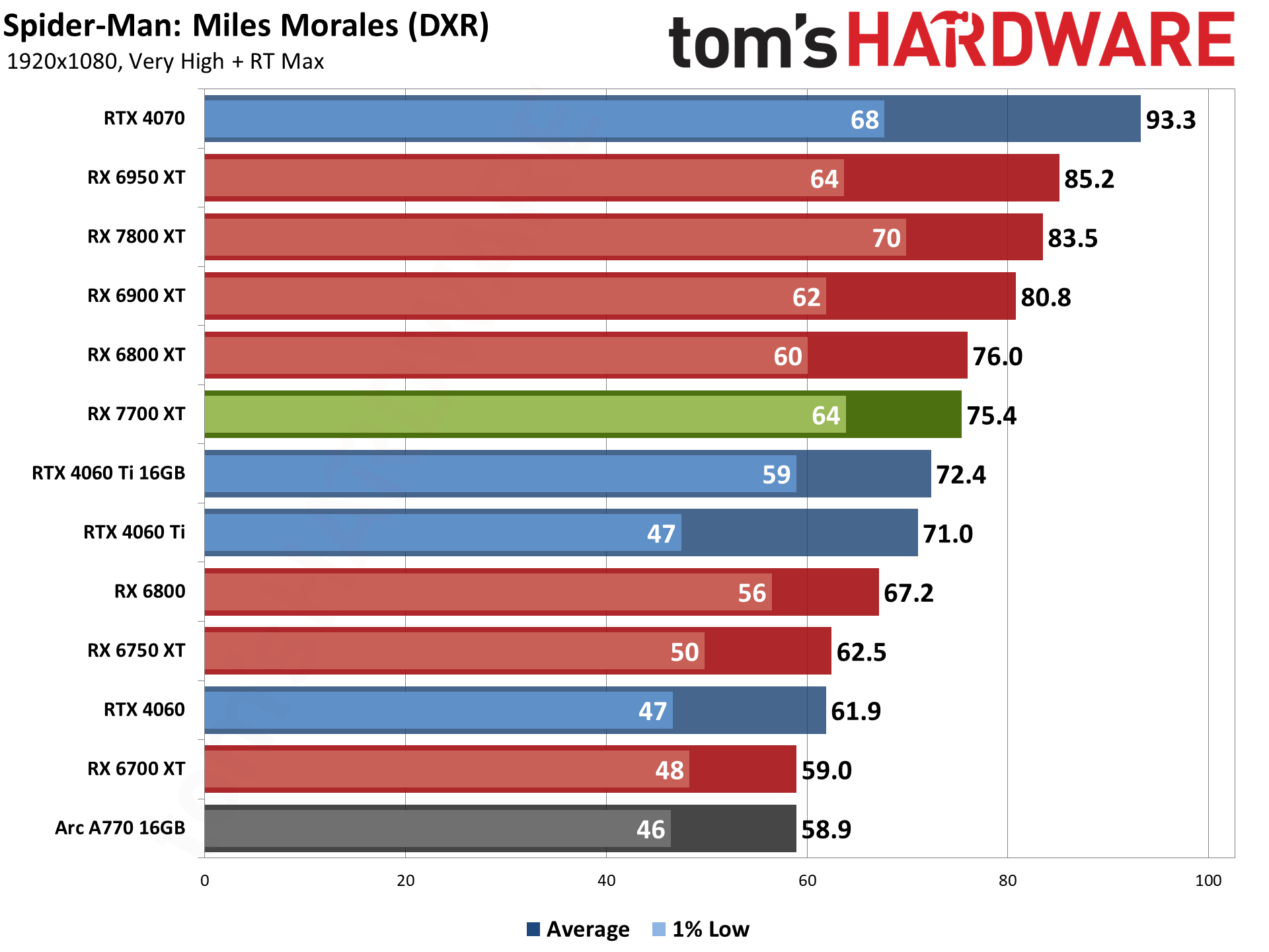
Nvidia continues to lead in ray tracing performance, by 11% overall now. That's only a 2% delta compared to 1440p, indicating that neither of these GPUs is running into VRAM limits so far. Minecraft continues to be the outlier, thanks to its full ray tracing graphics, but Cyberpunk also shows a large 22% lead for the 4060 Ti compared to the RX 7700 XT.
Otherwise, everything pretty much remains as before. The 7700 XT comes out 11% ahead of the RX 6800, so the improved ray tracing hardware in RDNA 3 does help, but it's not a massive improvement.
We do have to wonder what performance might have looked like had AMD used a monolithic die with no MCDs but otherwise identical specs, because the external cache and memory controller chips have to introduce at least some additional latency. RDNA 3 is basically a proof of concept for GPU chiplets; RDNA 4 is where we'll hopefully see more impressive gains from the chiplet approach.
- MORE: Best Graphics Cards
- MORE: GPU Benchmarks and Hierarchy
- MORE: All Graphics Content
Get Tom's Hardware's best news and in-depth reviews, straight to your inbox.
Current page: Radeon RX 7700 XT: 1080p Ultra Gaming Performance
Prev Page Radeon RX 7700 XT: 1440p Ultra Gaming Performance Next Page Radeon RX 7700 XT: 1080p Medium Gaming Performance
Jarred Walton is a senior editor at Tom's Hardware focusing on everything GPU. He has been working as a tech journalist since 2004, writing for AnandTech, Maximum PC, and PC Gamer. From the first S3 Virge '3D decelerators' to today's GPUs, Jarred keeps up with all the latest graphics trends and is the one to ask about game performance.
-
cknobman This card will be a winner when the price is reduced to $400.Reply
Between this card and its bigger brother, the 7800XT, Nvidia's 4060 series of cards (and maybe even the 4070) are completely irrelevant now. -
oofdragon Replycknobman said:This card will be a winner when the price is reduced to $400.
Between this card and its bigger brother, the 7800XT, Nvidia's 4060 series of cards (and maybe even the 4070) are completely irrelevant now.
I'd say the 7800XT will be a winner in a year or two when it's discounted at $400. The 7700XT at 12GB is more like.. $300. -
Colif Both cards released make the 4060 TI even more of a joke than it was already.Reply
5TGHvXKkhao
The price difference is bigger in other countries, it makes more sense there.
7800xt in Australia is about $1000
7700xt in Australia is about 860
7800xt selling out fast so 7700xt might be only choice for a few weeks in some places. -
JarredWaltonGPU Reply
Does it, though?Colif said:Both cards released make the 4060 TI even more of a joke than it was already.
The price difference is bigger in other countries, it makes more sense there.
7800xt in Australia is about $1000
7700xt in Australia is about 860
7800xt selling out fast so 7700xt might be only choice for a few weeks in some places.
272
So 20% faster in rasterization, 8–10 percent slower in DXR, uses 60W more power, costs 12.5% more. The 128-bit and 8GB is a concern, sure, but it's absolutely not the end of the world. Turn down settings to high and it's fine, even at 1440p.
7800 XT makes for a bigger gap, and that's definitely the better card of the 4060 Ti/7700 XT/7800 XT class. But the 7700 XT isn't a clear-cut winner in every situation: Higher power, worse RT, worse AI hardware, higher cost. -
P1nky Reply
Can't believe you're actually defending the 4060 Ti, a GPU with just 8GB for a massive $400 price. No wonder you gave the 7700 XT a meh rating.JarredWaltonGPU said:So 20% faster in rasterization, 8–10 percent slower in DXR, uses 60W more power, costs 12.5% more. The 128-bit and 8GB is a concern, sure, but it's absolutely not the end of the world. Turn down settings to high and it's fine, even at 1440p.
7800 XT makes for a bigger gap, and that's definitely the better card of the 4060 Ti/7700 XT/7800 XT class. But the 7700 XT isn't a clear-cut winner in every situation: Higher power, worse RT, worse AI hardware, higher cost.
You must watch HU's investigation of how bad the textures look on just 8GB, even if the framerates are unaffected. There are plenty of games that won't be bottlenecked by 8GB by 30 second benchmark runs. Cards might performs similarly sometimes, but the texture experience and frame drops on on 4060 Ti are a joke on long benchmark runs. -
luissantos ReplyJarredWaltonGPU said:So 20% faster in rasterization, 8–10 percent slower in DXR, uses 60W more power, costs 12.5% more. The 128-bit and 8GB is a concern, sure, but it's absolutely not the end of the world. Turn down settings to high and it's fine, even at 1440p.
7800 XT makes for a bigger gap, and that's definitely the better card of the 4060 Ti/7700 XT/7800 XT class. But the 7700 XT isn't a clear-cut winner in every situation: Higher power, worse RT, worse AI hardware, higher cost.
Your only valid point is power consumption.
DXR performance is mostly irrelevant: neither card is sufficiently capable in that regard. Until DXR comes with a 5-10% penalty in performance it will remain a gimmick. In fact, games that have had a "modern render release" like Quake 2 look far better using said new render than DXR. For CP2077 I'm sure I could find plenty of scenes where I could take a screenshot with RT on and off and trick you into guessing incorrectly. Moreover, UE 5's Lumi produces reasonably similar results with RT on and off, and that engine will have the most coverage of any other in the game market for the years to come.
As for AI, just a few weeks ago AMD announced huge strides in that field as well, but again, that's irrelevant. What percentage of the market is buying a consumer mid-range GPU to focus primarily (or at all) on AI? -
JarredWaltonGPU Reply
The texture stuff is mostly game specific. Some games (Gollum, Star Wars, and basically a lot of Unreal Engine stuff) do a poor job at managing VRAM and so when the game exceeds 8GB, they load minimum res on some surfaces and not others. Then you get "texture popping" and stuttering. It's frankly a bad game engine design. Lots of other games exist that look very good and don't have the same problem, so it's pretty much a matter of coding quality and effort.P1nky said:Can't believe you're actually defending the 4060 Ti, a GPU with just 8GB for a massive $400 price. No wonder you gave the 7700 XT a meh rating.
You must watch HU's investigation of how bad the textures look on just 8GB, even if the framerates are unaffected. There are plenty of games that won't be bottlenecked by 8GB by 30 second benchmark runs. Cards might performs similarly sometimes, but the texture experience and frame drops on on 4060 Ti are a joke on long benchmark runs.
The solution is to turn texture and shadow resolution down a notch, which usually drops VRAM use from <12GB to <8GB and rarely has a noticeable impact on visuals. Except some games (again, UE especially) don't even seem to do this very well. Software optimizations, particularly with low-level APIs (DX12/Vulkan) can easily deliver a 50% boost in performance, sometimes more. It's just a matter of how much effort the developers / publishers want to expend.
I’m not saying 4060 Ti is great. I’m just pointing out that it’s not universally inferior to the 7700 XT / 7800 XT. 192-bit and 12GB or 256-bit and 16GB is inherently a superior configuration to 128-bit and 8GB/16GB. There's no question about that. But VRAM capacity and bandwidth aren't the only factor that matters. -
shady28 Agree this isn't all that impressive, but neither was the 4060 Ti. I bought a 6700XT last year, and after seeing the 4060 Ti I really have no regrets.Reply
This 7700XT doesn't really seem to change any of that. If it were say $399 instead of $450, it might be ok. It's kind of a trade off with the 4060 Ti, generally better on performance (but not always) while losing on gaming power draw, but costs $50 more, which is frankly not good enough for an AMD GPU.
Best deal on your comparison is still the 6700 XT. -
Ilijas Ramic Reply
In my country the price diff is around 140usd 7700xt vs 7800xt. I ordered 7700xt for 680usd while the 7800xt is 820usd. Its almost 3x more price diff what most people pay. Also most people buy from newegg since they are from US. But us EU people are getting a hefty pay up on these card. Heck the newegg price is 450usd for 7700xt while i have to pay 230usd more. I havent upgraded my gpu for like 8 years now. Heck i got r9 380 on release date. And i paid back than msrp US price here wich was shocking 200usd. But after that we got price diffs soo large i just couldnt afford to upgrade.Colif said:Both cards released make the 4060 TI even more of a joke than it was already.
5TGHvXKkhao
The price difference is bigger in other countries, it makes more sense there.
7800xt in Australia is about $1000
7700xt in Australia is about 860
7800xt selling out fast so 7700xt might be only choice for a few weeks in some places.
